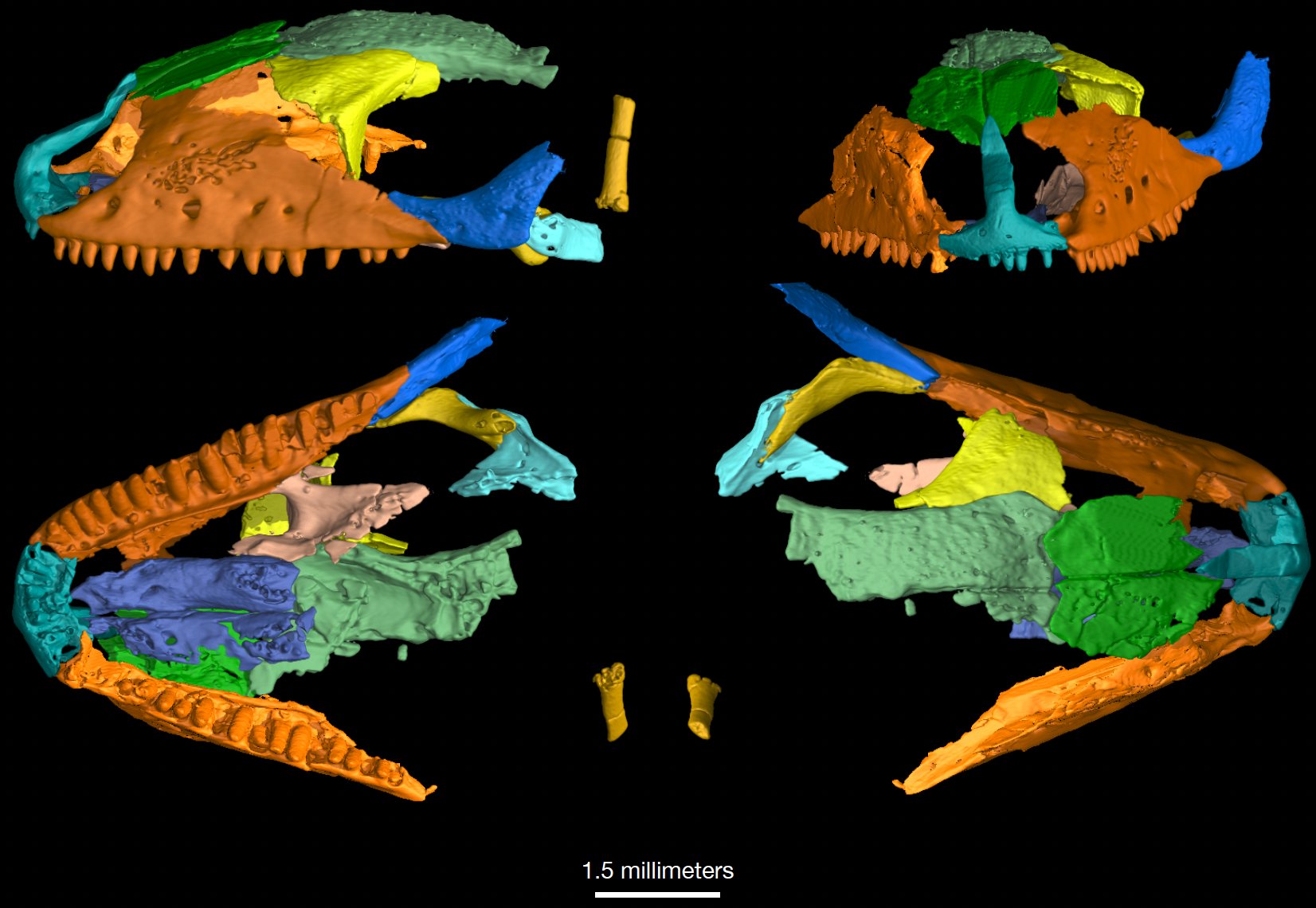Image courtesy of Chase D. Brownstein.
Long before humans evolved, lizards and other reptiles roamed the Earth. One such class of these lizards was the Squamata, literally meaning ‘scaled ones.’ Today, Squamata are the largest order of reptiles, but during the Mesozoic Era, the time of dinosaurs, they were far from the dominant species. Sometime during the Mesozoic Era, the Squamata clade – a group of organisms sharing a common ancestor – experienced adaptive radiation, the rapid development of a single species to multiple new species that occupy different environments. However, fossil records of this time are poor, so researchers have struggled to develop a full picture of the evolution of these species and where it fits in with other groups of organisms.
So, how did researchers solve that puzzle? The two primary methods of reconstructing relationships between species are morphology and DNA analysis. In morphology, researchers look at an organism’s key features and how closely they match the features of other species. Species sharing more features are more closely related. However, many morphological features that help determine ancestry are lost with adaptive radiation. Because of this phenomenon, researchers also use DNA analysis, which uses the number of differences in DNA sequences to determine how closely species are related. For Squamata, these two methods previously led to conflicting stories. For example, morphological analysis has related Squamates to certain clades which DNA analysis subsequently disproved. But new findings have the support of both methods.
In a recent publication in Nature Communications, Chase Brownstein (YC ‘23) and other researchers at Yale’s Department of Earth and Planetary Sciences determined new evolutionary relationships held by the Squamata clade using morphology. These results confirmed previous DNA analyses and added to them. The team established their findings using two lizards, the Eoscincus ornatus and Microteras borealis. Both species hold stable positions within the Squamata clade, meaning they hold confirmed positions as early members of the clade, allowing researchers to build upon these previous relationships with certainty. “With the species we chose, understanding their anatomy helped understand transitions and the evolution of the family,” Chase said.
Looking at the skulls of these two lizards, the researchers were surprised to find many differences in the hard palates. In fact, in E. ornatus, Chase and other researchers were able to find features lost to all modern descendants, allowing them to tie the Squamata with another major lizard clade, the pan-lacertids. “These features gave us a greater appreciation for the degree of complex evolution in the group,” Chase said.
The team’s findings provide new and improved evidence for current hypotheses of species distribution and evolution. For example, the distribution of these lizards in the Northern hemisphere solidifies a hypothesis that their clades had spread to both North America and Eurasia-Africa before the continent’s separation. “You can never be sure of how evolution and biogeography happen,” Chase said. Despite this, he remains interested in connecting the puzzle pieces of evolution and solving more mysteries of how the animals we know came to be.

